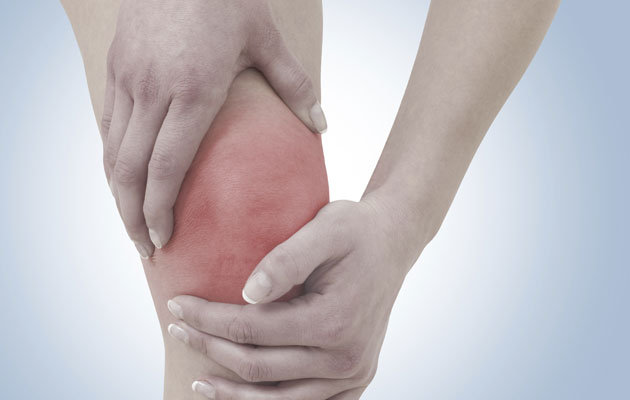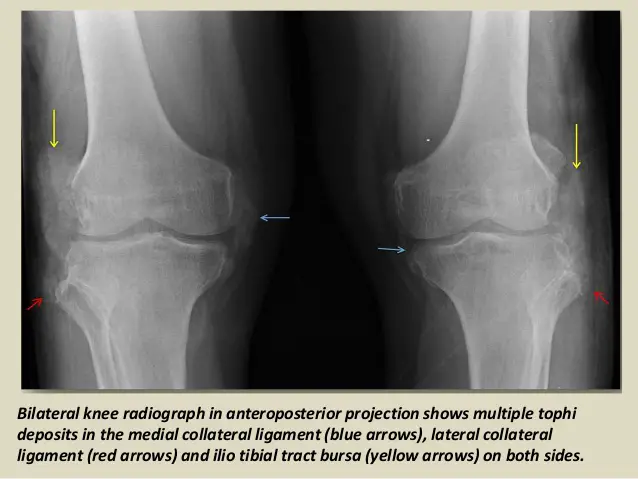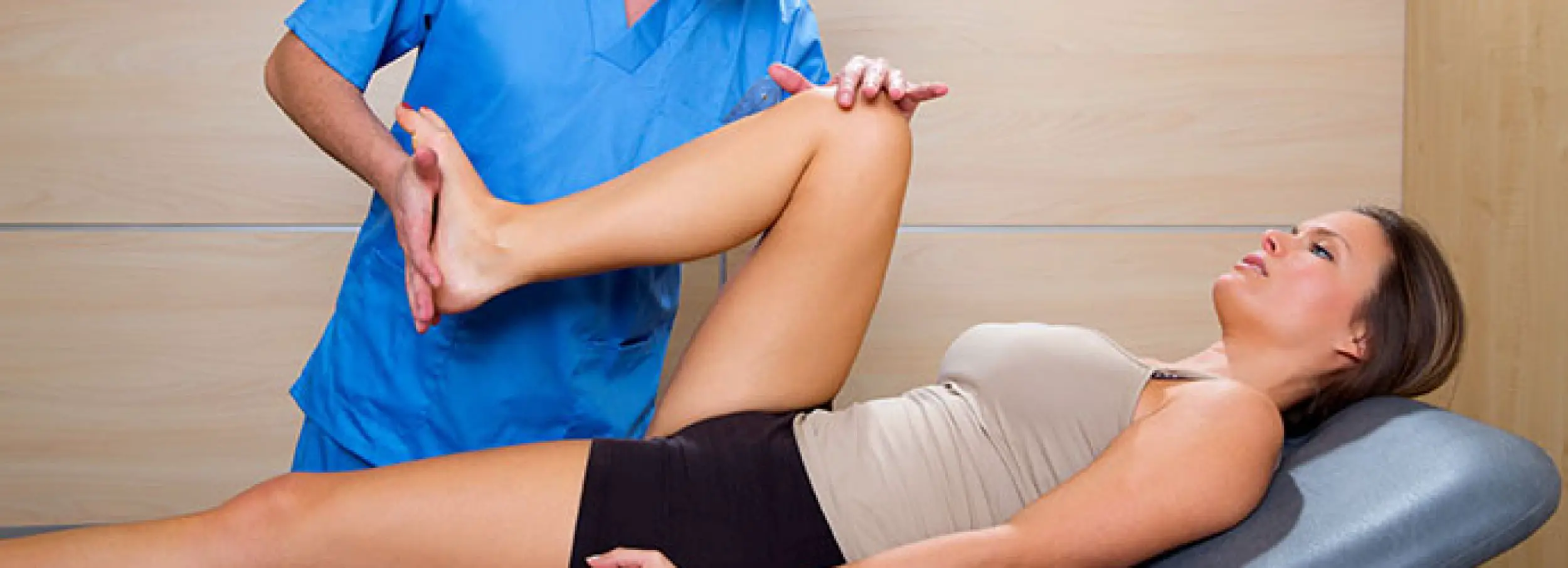Gout refers to a metabolic disease associated with an abnormal accumulation of uric acid in the articulations, and its manifestation is primarily through inflammation of the joints and its surrounding tissues. It is more common in men above 30 years of age, and in females it usually comes after menopause. Gout commonly affects the joints of the body, such as the knee, the toe joints, and the joint of the shoulder and hip.

The characteristic feature of gout in the knee includes tenderness of the knee joint, warmth around the knee joint, swelling and pain of the affected articulation. Precipitating factors like food and drinks can cause excessive uric acid production, known as hyperuricemia. Foods with high purine content include red meat and alcohol; they increase serum levels of uric acid, which accumulates in the knee joint causing crystal deposition arthritis or gout. Other conditions associated to gout include kidney stones, high blood pressure, obesity, diabetes and having a positive family history of gout. All of these factors can multiply the chances of developing gout of the knee.
with thanks https://www.ncbi.nlm.nih.gov/
In this article, we are going to review how long does gout in the knee last. To do it, we are going to describe two types of gout according to the extension of the symptoms (acute and chronic gout). Then, we will cover gout attacks, how long do they last, and what should be done to treat them.
What is acute gout
Acute gout is characterized by a sudden onset of severe throbbing and crushing pain, usually in a single joint (acute monoarthritis). It is often described by the patient as the most severe pain ever experienced, and known clinically as excruciating pain. Pain reaches its maximum intensity within 5 hours of its onset. It can be as severe as to wake up the patient from their sleep in the middle of the night or in the early morning.

The affected joint is also tender to the touch, and may become sensitive even to the touch of clothing over the skin. Other features of acute gout include swelling of the joint and erythematous, warm, and shiny skin over the affected articulation. Most patients with acute gout show features of synovitis, bursitis, cellulitis, and tenosynovitis. In other words, the articulation and surrounding tissues go through a process of acute inflammation. This is especially the case when a bigger joint such as the knee is involved. In acute gout of the knee, the patient is usually pyretic, patient complains of malaise, and may feel disoriented and confused. When the acute attack is resolved, the skin over the affected joint is desquamated and itchy. Some patients experience cluster attacks in different joints than the primarily affected joint while some patients may experience milder episodes lasting for only a few days.
What is chronic Gout
Chronic is the clinical name of a long-lasting disease, as opposed to acute, which is usually sudden and limited to a short period. After a single primary acute attack described above, some patients never experience a secondary attack, but others may progress to chronic gout. Chronic gout is associated with chronic pain of the joint, but milder than acute episodes of gouty arthritis. It also features structural and functional damage of the articulation. Many chronic cases are due to uncontrollable hyperuricemia, which leads to multiple attacks of acute gout and hence progresses to chronic gout. The chronicity of gout is more common in seniors. In addition to the deposition in the joints, in chronic cases uric acid crystals are deposited in the soft tissues around the joints, forming irregular nodular swellings known as tophi. These lesions have a whitish appearance, and may ulcerate with a gritty white discharge.
How long does a gout attack last?
Gout attacks, also known as gout flares, are episodes of intense pain, similar to those described in the section about acute gout. Initially high levels of uric acid in the blood are asymptomatic as the uric acid crystals are accumulating in the joints. Acute attacks of gout appear suddenly and become worse within 5 to 8 hours. This attack is usually self-limiting, resolving in 3 to 14 days, depending on whether or not the patient receives treatment.
Thus, the natural course of a gout attack is as follows:
It usually starts late in the night or at early morning with severe joint pain
The pain increases and reaches its maximum between 5 and 8 hours after its onset
After its peak, the pain starts to alleviate in the following hours
The symptoms resolve in 3 days with treatment
In patients who do not receive treatment, gouty pain may last for up to 14 days
After the first attack, many patients may not experience a second attack for many years. But if they do, they can progress to chronic gout. Initially, there are only acute attacks until they transform into flares of gouty symptoms. As the disease progresses, the flares become longer than acute attacks, sometimes becoming a permanent flare which leads to chronicity.
Management of knee gout flares
The definite diagnosis of gout is made by needle aspiration of the joint fluid, which is studied to detect urate crystals. The aspirate from the knee joint contains crystals, even during the asymptomatic stage after an acute attack. Treatment should include lifestyle modifications to decrease the production of uric acid, weight management, and reductions in the intake of alcohol.
Local ice packs are used to decrease the signs of inflammation. For acute episodes, NSAIDs are used as the drug of choice, but joint aspiration can also relieve the pain. To decrease the inflammation, corticosteroid injection can be administered directly into the joint, and allopurinol and colchicine can be used to decrease inflammation. The patient is given a urate-lowering therapy in cases of recurrent gouty attacks, when there is evidence of joint damage, very high uric acid levels, and renal problems.
References:
Soloway, S. (2011). Tophaceous gout in a knee with total joint replacement. JCR: Journal of Clinical Rheumatology, 17(1), 48.
Ko, K. H., Hsu, Y. C., Lee, H. S., Lee, C. H., & Huang, G. S. (2010). Tophaceous gout of the knee: revisiting MRI patterns in 30 patients. JCR: Journal of Clinical Rheumatology, 16(5), 209-214.
Schlesinger, N., Schumacher, R., Catton, M., & Maxwell, L. (2006). Colchicine for acute gout. Cochrane Database of Systematic Reviews, (4).
Janssens, H. J., Lucassen, P. L., Van de Laar, F. A., Janssen, M., & Van de Lisdonk, E. H. (2008). Systemic corticosteroids for acute gout. Cochrane Database of Systematic Reviews, (2).
Schumacher, H. R., Edwards, L. N., Perez-Ruiz, F., Becker, M., Chen, L. X., Furst, D. E., … & Boice, J. A. (2005). Outcome measures for acute and chronic gout. The Journal of Rheumatology, 32(12), 2452-2455.

One comment